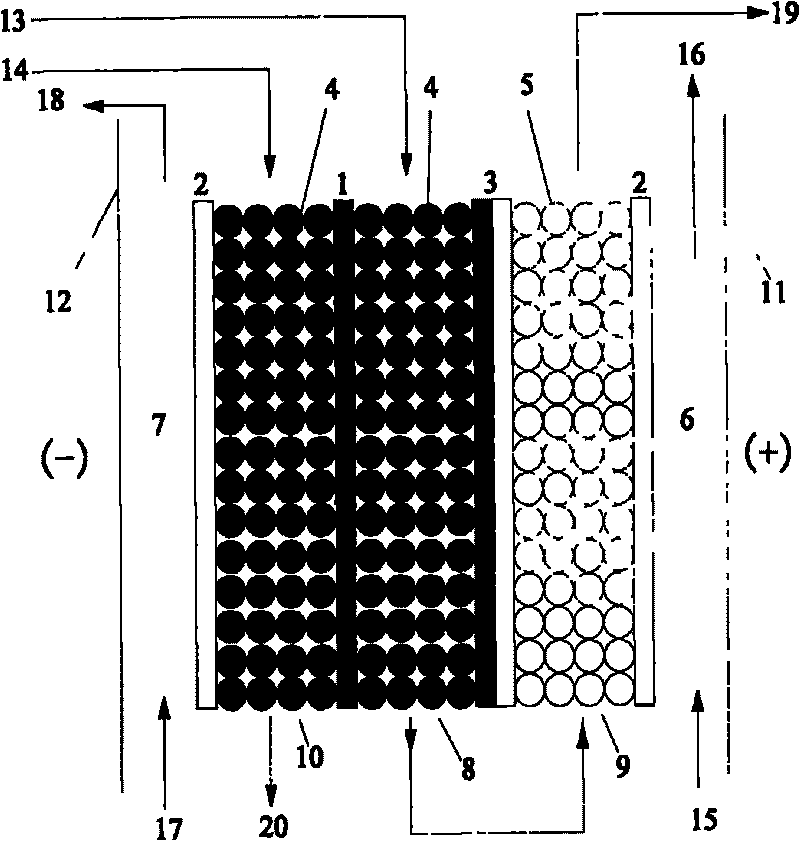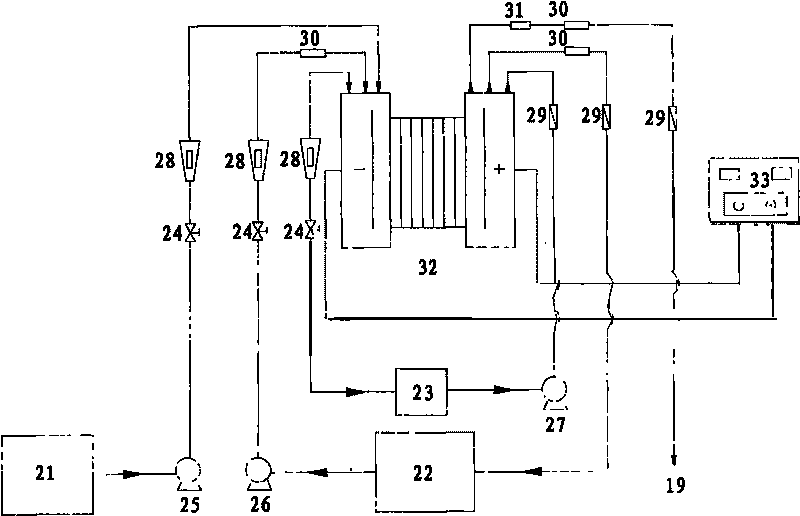Treatment method of electroplating rinsewater
A treatment method and wastewater technology, which is applied in metallurgical wastewater treatment, separation methods, electrodialysis, etc., can solve the problems that are not conducive to the stable operation of the process, increase the resistance of the membrane stack, and hinder migration, so as to eliminate the risk of scaling and increase the current Efficiency, no secondary pollution effect
- Summary
- Abstract
- Description
- Claims
- Application Information
AI Technical Summary
Problems solved by technology
Method used
Image
Examples
Embodiment
[0040] The water purification equipment and water process of electrodeionization device with bipolar membrane are as follows figure 1 , 3 As shown, from the negative electrode to the positive electrode, there are negative electrode chamber, concentration chamber, first desalination chamber, second desalination chamber and positive electrode chamber. The size of the partitions of the first desalination chamber, the second desalination chamber and the concentration chamber is 100*150*5mm, and the effective membrane area is 54cm 2 . The ion-exchange membrane used is a heterogeneous ion-exchange membrane for low-permeability electrodeionization, produced by Zhejiang Qianqiu Environmental Protection Water Treatment Co., Ltd.; the bipolar membrane is a homogeneous bipolar ion-exchange membrane, produced by Hebei Wen'an Guangya Chemical Co., Ltd.; The exchange resin is D072 and D296 salt type macroporous strong acid and strong basic resin. All resins have a particle size range of ...
PUM
| Property | Measurement | Unit |
|---|---|---|
| particle diameter | aaaaa | aaaaa |
| thickness | aaaaa | aaaaa |
| electrical resistivity | aaaaa | aaaaa |
Abstract
Description
Claims
Application Information
 Login to View More
Login to View More - R&D
- Intellectual Property
- Life Sciences
- Materials
- Tech Scout
- Unparalleled Data Quality
- Higher Quality Content
- 60% Fewer Hallucinations
Browse by: Latest US Patents, China's latest patents, Technical Efficacy Thesaurus, Application Domain, Technology Topic, Popular Technical Reports.
© 2025 PatSnap. All rights reserved.Legal|Privacy policy|Modern Slavery Act Transparency Statement|Sitemap|About US| Contact US: help@patsnap.com



